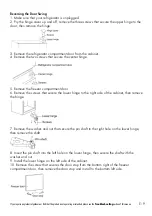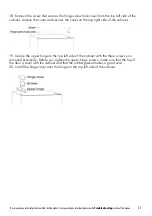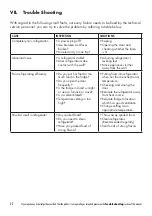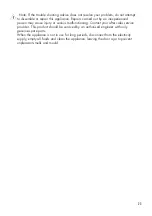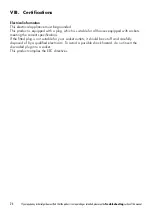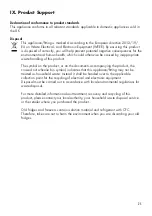
1
4
If you require any technical guidance or find that the product is not operating as intended, please see the
Troubleshooting
section of this manual
evaporation. Keep fresh fruits and vegetables on one section, this will help to prevent taint of
odor in other sections of the refrigerator.
Do not over crowd the refrigerator. Keep enough space between foods because if foods
are too close, the cold air flow will be blocked, thus affecting the refrigeration effect. Do not
store excessive or overweight foods, to avoid the shelf from being crushed. When storing
the foods, keep a distance away from the inner wall; and do not place the water-rich foods
too close to the fridge rear wall, as there will be a risk of them becoming frozen to the inner
wall.
Categorised storage of foods
Foods should be stored by category, with the foods you eat every day placed in front of the
shelf, so that the door open duration can be shortened and food spoilage due to expiration
can be avoided.
Energy-saving tips: Allow hot food to cool down to the room temperature before putting it
in the refrigerator. Put the frozen food in the fresh food compartment to thaw, using the low
temperature of the frozen food to cool the fresh food, thus saving energy.
Use of the frozen food storage compartment
The freezer temperature is controlled below -18º C, and it is advisable to store the food for
long-term preservation in the freezer compartment, but the storage duration indicated on the
food packaging should be adhered to.
The freezer drawers are used to store food that needs to be frozen. Fish and meat of large
block size should be cut into small pieces and packed into fresh-keeping bags before they
are evenly distributed inside the freezer drawers.
Tips for Fridge/freezer storage
• Allow the hot foods to cool down to the room temperature before putting them in the
freezer compartment.
• Do not put a glass container with liquid or the canned liquid that is sealed in the freezer
compartment, to avoid it bursting due to volume expansion after the liquid becomes
frozen.
• Divide foods into smaller portions for freezing.
• Before freezing foods, ensure packing/bag used should are dry, this avoids the
packaging/bags sticking together frozen.
• To avoid contamination and odour transfer, foods should be packed and/or covered by
suitable materials. Eg firm, tasteless, impervious to air and water, non-toxic and pollution-
free.



















